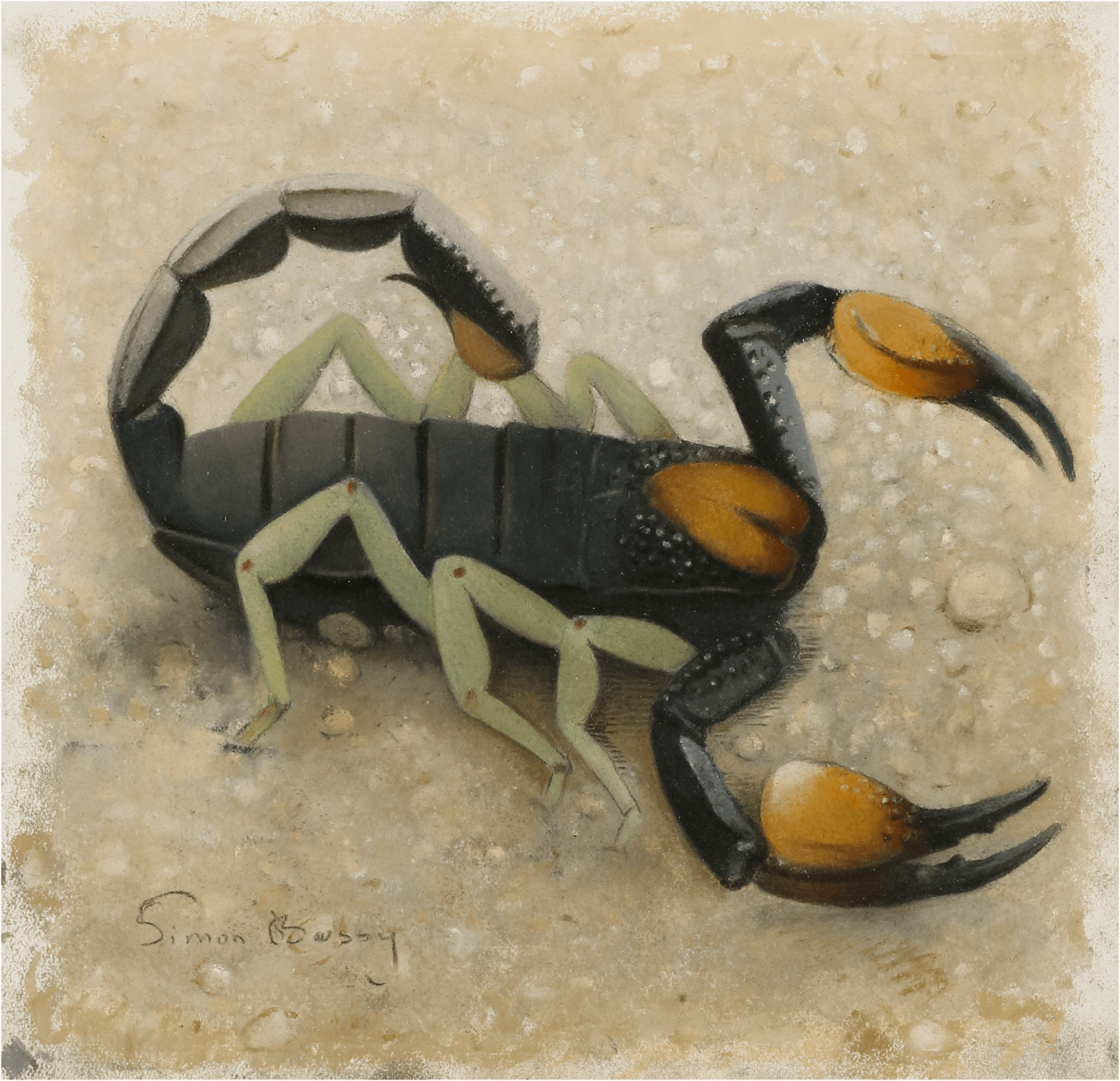André Gide, the French author, a lifelong friend of Bussy and previous owner of this painting, described Bussy as ‘authentic inside and out, which enables him to be at home no matter where, and particularly with animals and plants.’[1] Authenticity and honesty pervade his oeuvre, particularly in this splendent painting. Bussy spent hours studying his subjects at the London Zoo or in Vincennes Park and even longer distilling their forms and contours in precise and painstaking detail. Gide described his secluded process: ‘he shuts himself up with his collection of studies and by a kind of patient and lover-like distillation evolves from them his paintings.’[2] The resultant works express the essence of his subjects with a clarity of vision unparalleled by his contemporaries.
Until recently, this work remained in the collection of Gide and his daughter, Catherine. Gide met Dorothy, Simon’s wife, in 1918 and became his translator. She fell in love with him and remained infatuated with him...
André Gide, the French author, a lifelong friend of Bussy and previous owner of this painting, described Bussy as ‘authentic inside and out, which enables him to be at home no matter where, and particularly with animals and plants.’[1] Authenticity and honesty pervade his oeuvre, particularly in this splendent painting. Bussy spent hours studying his subjects at the London Zoo or in Vincennes Park and even longer distilling their forms and contours in precise and painstaking detail. Gide described his secluded process: ‘he shuts himself up with his collection of studies and by a kind of patient and lover-like distillation evolves from them his paintings.’[2] The resultant works express the essence of his subjects with a clarity of vision unparalleled by his contemporaries.
Until recently, this work remained in the collection of Gide and his daughter, Catherine. Gide met Dorothy, Simon’s wife, in 1918 and became his translator. She fell in love with him and remained infatuated with him throughout her marriage to Bussy; thankfully, the Bloomsbury group was inclined to love in triangles, and the three creatives remained lifelong friends.[3] After the Second World War, Gide wrote: ‘Only the all-enveloping affection of my friends the Bussys warms me a bit and keeps me from despair.’[4]
Born to a family of shoemakers in Dole, France, Albert Simon Bussy attended the local drawing school. Bussy trained at the École des Beaux-Arts in Paris under the Symbolist painter Gustave Moreau (1826-1898). It was at the pioneering Galerie Durand-Ruel that Bussy had his first exhibition of works in pastel between 1897 and 1899. His colour palette was deeply influenced by his friend Henri Matisse, whom he studied with in Paris, however, it was his association with the Bloomsbury group of artists and writers that was to become an enduring influence upon his oeuvre.
On his arrival in London in 1901, Bussy was immediately introduced to the artistic and increasingly Bohemian circles that graced the doors of the London Art Club in Mayfair. Here he met the great English painter William Rothenstein (1872-1945) who greatly admired Bussy’s exhibition then on display at Leighton House.
In particular, it was Dorothy Strachey (1865-1960), novelist and translator, who made the biggest impression on Bussy. Strachey was a close friend of the Bloomsbury group and published her novel Olivia through the Hogarth Press with the help of Virginia Woolf, who founded the publishing house with her husband Leonard. Simon and Dorothy married two years after first meeting, in 1903. This connection firmly places Bussy and Strachey at the forefront of one of the most enriching and enduring cultural circles of the twentieth century.
Bussy and Strachey later set up a home at Le Souco, the house in Roquebrune near Monaco. Le Souco would soon become famous as an intellectual hub where the artistic and literary elite from both sides of the channel were to convene and exchange their ideas. Lytton Strachey, Duncan Grant (whom later referred to Bussy as his Master), Roger Fry, Vanessa Bell and Virginia Woolf all came to stay at Le Souco for long periods of time. Its place within the history of Bloomsbury is as significant, if not as famous, as 46 Gordon Square, London, the home that Vanessa Bell established with her siblings Virginia, Adrian and Thoby in 1904.
[1] André Gide, (1949) Oiseaux. Poissons, Fleurs et Animaux: An Exhibition of Paintings by Simon Bussy. London: The Leicester Galleries, p. 2.
[2] Ibid p. 3.
[3] Mary Ann Caws, (2000) Bloomsbury and France. Oxford: Oxford University Press, p.331.
[4] André Gide quoted in ibid, p.341.













